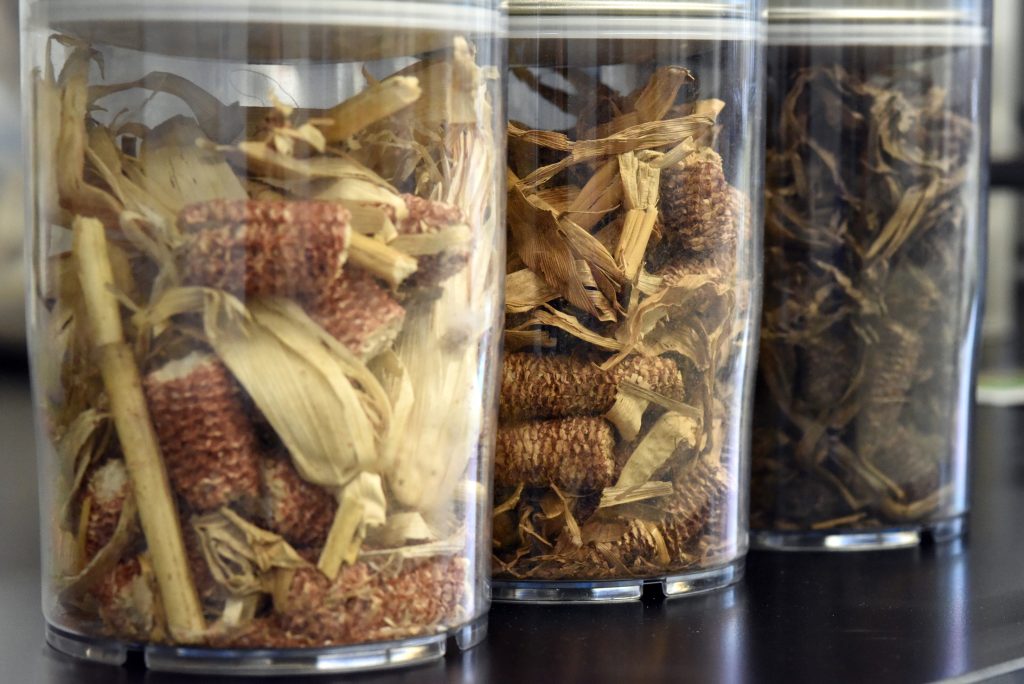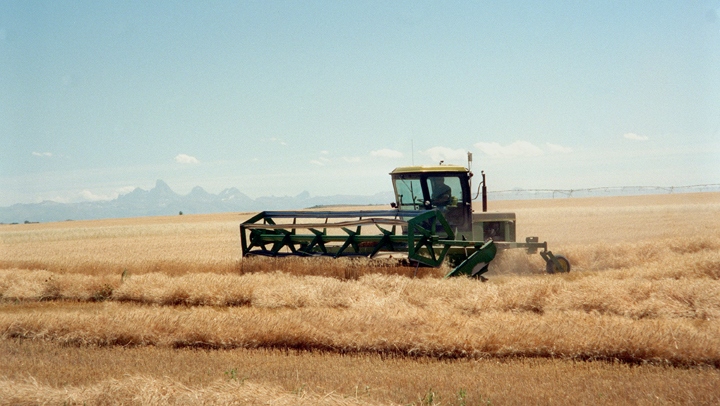Growing up on a farm in Fremont County, Idaho, Dr. J. Richard Hess never thought he was preparing himself for a career in advanced manufacturing. Today, after 20 years as a key player in Idaho National Laboratory’s biomass program, he sees innovative possibilities for all the materials he was surrounded by as a youth.
Hess was recently named winner of the Excellence in Bioenergy Award for 2017, given by BBI International, an industry trade group. But while much of his career focus has been on biomass for energy production, Hess, director of INL’s Energy Efficiency & Renewable Energy (EERE) Office, sees much more potential: carbon fibers, chemicals and advanced manufacturing.
Biomass can be used in power plants, but Hess says much more exciting possibilities include fuels, chemicals, and high-strength, lightweight advanced materials being made from corn stalks, wood pulp and even municipal solid waste.
“The carbon could be of more value than the energy,” he says.
Growing up on a farm near Ashton, Idaho, 51 miles from his corner office at INL, Hess was interested in chemistry, biology and engineering, but farming was all he thought he would do with his life. However, his grandfather, Gene Hess, had a rule: No matter how strongly anyone in the family felt tied to the farm, they still had to get a college degree. Hess went to Ricks College (now BYU-Idaho), then Brigham Young University in Utah, where he got his bachelor’s in botany.

This was in the mid-1980s, a time of great change in American agriculture. By the time Hess had his diploma, his father, John Hess, told him, “You might as well think about something else.” Hess stayed at BYU to get his master’s, also in botany, then attended Utah State University in Logan, where he earned his doctorate in plant science.
In 1992, he won a legislative branch fellowship sponsored by the American Association for the Advancement of Science (AAAS) that took him to Washington, D.C. Hess worked on the staff of Sen. Tom Daschle, D-S.D., who at the time was chairing the subcommittee on New and Alternative Uses for Agriculture.
“Ethanol had been around, but this was the beginning of cellulosic biofuels,” Hess said. The time in Washington gave him experience in renewables, federal grain inspection and meat safety standards.
He could have stayed in Washington, but instead returned to Idaho at the invitation of Paul Reep, Idaho National Engineering Laboratory’s technology director. The U.S. departments of Energy and Agriculture had a memorandum of understanding to research precision farming. Precision farming is an agricultural management technique that uses GPS, Global Navigation Satellite Systems and sensors to gather data on such variables as crop yields, plant water status, organic matter content and nitrogen levels. This allows farmers to manage inputs such as seed, fertilizer and water, saving energy and money. DOE’s contribution was more advanced GPS capabilities and better remote sensors than USDA had at that time.

After the terrorist attacks of Sept. 11, 2001, the effort to wean the United States off foreign oil supplies gave biomass more emphasis in the nation’s energy planning. Still, Hess and his colleagues were a small part of the Idaho lab’s mission, working out of leased space previously occupied by a different research team.
It wasn’t until 2012 that the biomass group got a new home in INL’s brand new 91,000-square-foot Energy Systems Laboratory. With the DOE-funded Biomass Feedstock National User Facility (BFNUF) and Bioenergy Feedstock Library, the program’s annual budget grew to between $15 million and $18 million.
Hess sees unique opportunities ahead when it comes to harvesting surplus heat from nuclear energy, to manufacture bioenergy products.
“Fuel is one use of biomass, but I also see chemicals and carbon fibers, feed and feed products,” he said. “We are talking about fungible intermediates that can go into markets, fungibles beyond fuels.”
As someone who has always been around things that grow, Hess said he gets asked sometimes how an agriculture-based program could grow up in the middle of a nuclear energy laboratory.
“Nothing happens by accident,” he said. ”It happens because of people.”






